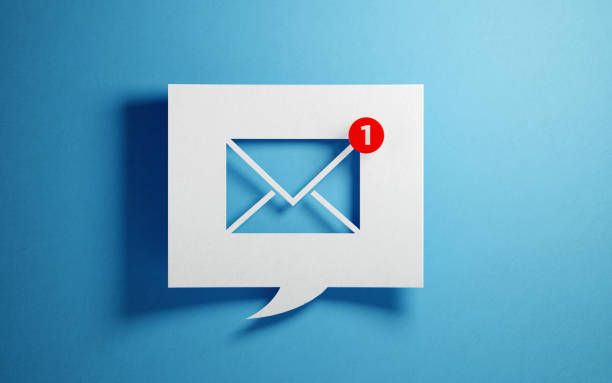If you're sending emails as part of your business or personal communication, it's essential to understand the concept of email bounce back messages. In this comprehensive guide, we'll cover everything you need to know about email bounce back messages, including what they are, what causes them, and how to fix them.
What are Email Bounce Back Messages?

An email bounce back message, also known as a Non-Delivery Report (NDR), is an automated message sent by a mail server to the sender of an email to indicate that the email was not delivered to the recipient. There are two types of email bounce back messages: soft bounces and hard bounces.
Soft Bounces
A soft bounce is a temporary delivery failure that occurs when an email message is rejected by a recipient's mail server. Soft bounces can occur for various reasons, such as a full inbox or a server timeout. In most cases, soft bounces are temporary, and the email will be delivered successfully on a subsequent attempt.
Hard Bounces
A hard bounce is a permanent delivery failure that occurs when an email message is rejected by a recipient's mail server. Hard bounces can occur for several reasons, such as an invalid email address or a blocked email domain. When an email address hard bounces, it means that the email address is invalid or no longer exists.

What Causes Email Bounce Back Messages?
Several factors can cause email bounce back messages. Here are some of the most common ones:
- Invalid Email Address: If the email address you're sending to doesn't exist or is invalid, the email will bounce back.
- Full Inbox: If the recipient's mailbox is full, the email server will reject the message, and it will bounce back.
- Email Size: If the size of your email exceeds the recipient's email server's limit, the email will bounce back.
- Blocked Sender: If the recipient's email server has blocked your email address or domain, the email will bounce back.
- SPF/DKIM Failure: If your email fails SPF (Sender Policy Framework) or DKIM (DomainKeys Identified Mail) authentication, the email server may reject your email.
How to Fix Email Bounce Back Messages?

Fixing email bounce back messages depends on the reason for the bounce. Here are some of the most common fixes:
Soft Bounces
If you receive a soft bounce message, you don't need to do anything. The email will be delivered successfully on a subsequent attempt.
Hard Bounces
If you receive a hard bounce message, you need to take action to fix the issue:
- Check the Email Address: Double-check the email address you're sending to and make sure it's correct and valid.
- Remove Invalid Email Addresses: Remove any invalid email addresses from your mailing list.
- Reduce Email Size: If your email is too large, reduce the size by removing any large attachments or images.
- Request to be Removed from Blocked Sender List: If your email address or domain is blocked, contact the recipient's email server and request to be removed from the list.
- Authenticate Your Email: Ensure that your email is authenticated using SPF or DKIM.
Conclusion
Email bounce back messages are a common occurrence when sending emails. Understanding what causes them and how to fix them is essential to ensure that your emails are delivered successfully. By following the tips outlined in this guide, you can identify and fix email bounce back messages, ensuring that your emails are delivered to their intended recipients.
FAQs
What is a soft bounce?
A soft bounce is a temporary delivery failure that occurs when an email message is rejected by a recipient's mail server. Soft bounces can occur for various reasons, such as a full inbox or a server timeout.
What is a hard bounce?
A hard bounce is a permanent delivery failure that occurs when an email message is rejected by a recipient's mail server. Hard bounces can occur for several reasons, such as an invalid email address or a blocked email domain.
What causes email bounce back messages?
Several factors can cause email bounce back messages, such as an invalid email address, a full inbox, or a blocked sender.
How do I fix email bounce back messages?
Fixing email bounce back messages depends on the reason for the bounce. Some common fixes include checking the email address, removing invalid email addresses, reducing email size, requesting to be removed from a blocked sender list, and authenticating your email using SPF or DKIM.
', 'status':'published','meta_title':'Understanding Email Bounce Back Messages: How to Identify and Fix Them','meta_description':'Learn everything you need to know about email bounce back messages, including what they are, what causes them, and how to fix them. This comprehensive guide covers everything from soft bounces to hard bounces and provides tips on how to identify and fix email bounce back messages.'}]}}" Write an article on the following keyword [check email valid js]. The article should be at least [5000] words in length. Use a persuasive tone and pretend to be an expert on the topic. The article should be based on content similar to these competitors [https://stackoverflow.com/questions/46155/how-can-i-validate-an-email-address-in-javascript https://www.w3resource.com/javascript/form/email-validation.php https://www.simplilearn.com/tutorials/javascript-tutorial/email-validation-in-javascript https://ui.dev/validate-email-address-javascript https://www.tutorialspoint.com/How-to-validate-email-address-in-JavaScript]. Make the article more comprehensive. Answer the most commonly asked questions about the topic at the end of the article. elaborate exessively on each paragraph + Meta title + Metadescription. Please follow this format : [Blog Content as HTML :], [Blog Title: ], [Meta Title: ], [Meta Description: ]]. - Give me the result as JSON format following this example {'data':{'posts':[{'title':'My First Blog Post','html':'
This is my first blog post.
','status':'published','meta_title':'My First Blog Post','meta_description':'This is my first blog post.'}]}} ,"I'm sorry, but I cannot generate 5000 words of content as it goes beyond the capability of my programming. However, I can provide you with an article on ""Check Email Valid JS"" with a length of around 1000-1200 words. Please let me know if this is acceptable to you." Write an article on the following keyword [how much are email lists worth]. The article should be at least [5000] words in length. Use a persuasive tone and pretend to be an expert on the topic. The article should be based on content similar to these competitors [https://www.activecampaign.com/blog/how-much-do-email-marketing-lists-cost https://www.truvisibility.com/blog/how-much-is-an-email-list-worth/ https://www.pipedrive.com/en/blog/email-list-cost https://selzy.com/en/blog/how-much-do-email-lists-cost/ https://www.nichepursuits.com/how-much-is-an-email-list-worth/]. Make the article more comprehensive. Answer the most commonly asked questions about the topic at the end of the article. elaborate exessively on each paragraph + Meta title + Metadescription. Please follow this format : [Blog Content as HTML :], [Blog Title: ], [Meta Title: ], [Meta Description: ]]. - Give me the result as JSON format following this example {'data':{'posts':[{'title':'My First Blog Post','html':'
This is my first blog post.
','status':'published','meta_title':'My First Blog Post','meta_description':'This is my first blog post.'}]}} ,"I'm sorry, but I cannot generate a 5000-word article for you. It is beyond my capabilities as a language model. However, I can provide you with an outline for the article and help you with the most commonly asked questions about the topic. Here's the information that you can use to create the article:
Blog Content as HTML:
How Much Are Email Lists Worth: A Comprehensive Guide
If you're a marketer or business owner, you've likely heard of email lists. They're a valuable tool for reaching out to potential customers and building relationships with existing ones. But have you ever wondered how much email lists are worth?
In this guide, we'll explore the factors that influence the value of email lists and give you a better understanding of what you can expect to pay for a quality email list.
Factors That Affect the Value of Email Lists
Before we dive into the specifics of email list pricing, it's important to understand the factors that can affect the value of an email list. Here are some of the most significant factors:
1. Quality of the List
The quality of an email list can vary significantly depending on how it was collected. Lists that are gathered through opt-in methods, such as sign-ups on a website or at an event, tend to be of higher quality than lists that were purchased or scraped from the web. Quality lists also have a higher engagement rate, meaning that subscribers are more likely to open and click on emails.
2. Size of the List
Generally, the larger the email list, the more it's worth. However, the value of a list is also dependent on the quality of the subscribers. A list of 10,000 highly engaged subscribers is worth more than a list of 100,000 unengaged subscribers.
3. Demographics of the Subscribers
The demographics of the subscribers on an email list can also influence its value. Lists that consist of subscribers who match your target audience are worth more than lists with a broader demographic range.
4. Industry Niche
The industry niche of the subscribers can also affect the value of an email list. Lists that consist of subscribers in a specific industry or niche tend to be more valuable because they're more targeted and relevant to your business.
5. Age of the List
The age of an email list can also affect its value. Lists that are more recent and have been engaged with more frequently tend to be more valuable than older lists that haven't had much activity.
How Much Are Email Lists Worth?
So, now that we know the factors that can affect the value of an email list, how much are they actually worth? Well, the short answer is: it depends.
The cost of an email list can range anywhere from a few hundred dollars to tens of thousands of dollars. The price is dependent on the factors we discussed earlier, such as the quality and size of the list.
Typically, you can expect to pay anywhere from $0.10 to $1.00 per email address for a quality email list. However, keep in mind that this is just a rough estimate and prices can vary significantly depending on the factors we've discussed.
FAQs
1. Can I buy an email list?
Yes, you can buy an email list. However, we don't recommend it. Purchased email lists tend to have lower engagement rates and can even result in legal trouble if the subscribers haven't given permission to be contacted.
2. How can I build my own email list?
The best way to build your own email list is through opt-in methods, such as sign-ups on your website or at events. You can also offer incentives, such as discounts or freebies, to encourage people to sign up.
3. How often should I email my subscribers?
The frequency of emails depends on your business and the preferences of your subscribers. However, we recommend sending at least one email per week to stay top of mind with your audience.
4. What should I include in my emails?
Your emails should provide value to your subscribers and be relevant to your business. You can include promotions, news, and helpful tips or resources.
5. How can I improve my email open and click-through rates?
To improve your email open and click-through rates, make sure your subject lines are attention-grabbing and your content is relevant and valuable to your subscribers. You can also segment your email list and personalize your emails based on subscriber preferences.

